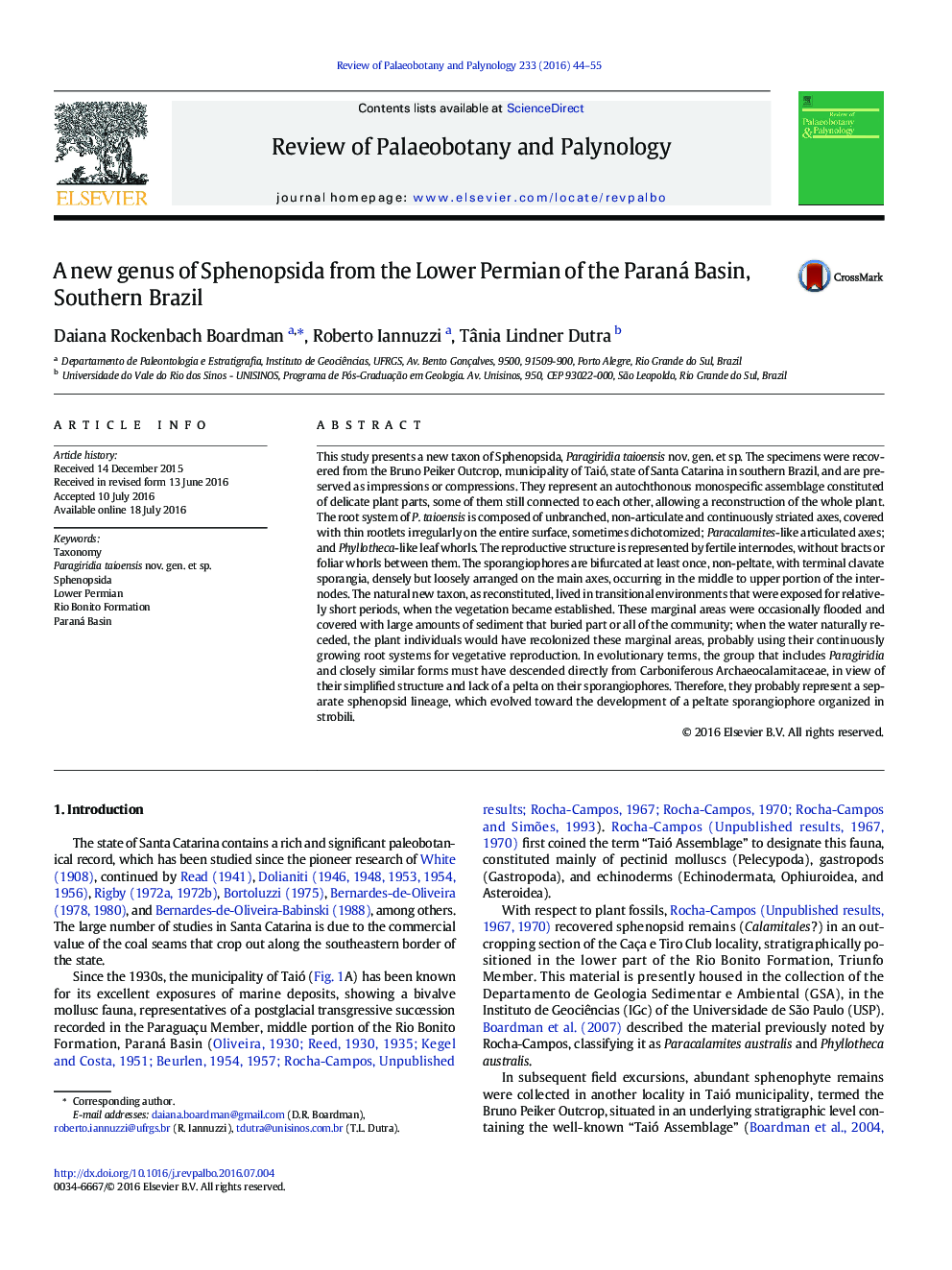| کد مقاله | کد نشریه | سال انتشار | مقاله انگلیسی | نسخه تمام متن |
|---|---|---|---|---|
| 4750040 | 1642464 | 2016 | 12 صفحه PDF | دانلود رایگان |

• A new genus of Sphenopsida, Paragiridia taioensis nov. gen. et sp.
• Santa Catarina state in southern Brazil, Lower Permian, Paraná Basin
• An autochthonous monospecific assemblage constituted of delicate plant parts in organic connection.
This study presents a new taxon of Sphenopsida, Paragiridia taioensis nov. gen. et sp. The specimens were recovered from the Bruno Peiker Outcrop, municipality of Taió, state of Santa Catarina in southern Brazil, and are preserved as impressions or compressions. They represent an autochthonous monospecific assemblage constituted of delicate plant parts, some of them still connected to each other, allowing a reconstruction of the whole plant. The root system of P. taioensis is composed of unbranched, non-articulate and continuously striated axes, covered with thin rootlets irregularly on the entire surface, sometimes dichotomized; Paracalamites-like articulated axes; and Phyllotheca-like leaf whorls. The reproductive structure is represented by fertile internodes, without bracts or foliar whorls between them. The sporangiophores are bifurcated at least once, non-peltate, with terminal clavate sporangia, densely but loosely arranged on the main axes, occurring in the middle to upper portion of the internodes. The natural new taxon, as reconstituted, lived in transitional environments that were exposed for relatively short periods, when the vegetation became established. These marginal areas were occasionally flooded and covered with large amounts of sediment that buried part or all of the community; when the water naturally receded, the plant individuals would have recolonized these marginal areas, probably using their continuously growing root systems for vegetative reproduction. In evolutionary terms, the group that includes Paragiridia and closely similar forms must have descended directly from Carboniferous Archaeocalamitaceae, in view of their simplified structure and lack of a pelta on their sporangiophores. Therefore, they probably represent a separate sphenopsid lineage, which evolved toward the development of a peltate sporangiophore organized in strobili.
Journal: Review of Palaeobotany and Palynology - Volume 233, October 2016, Pages 44–55